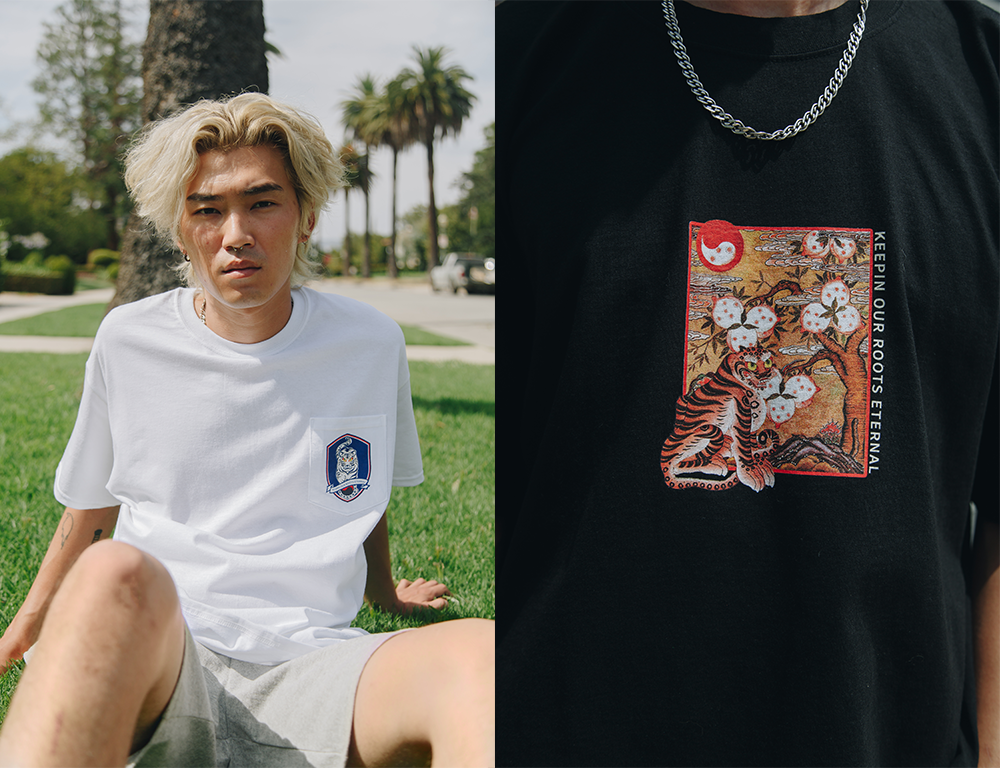The Korean tiger is a symbol that has been a constant presence throughout Korean history and folklore. It has been depicted in a multitude of ways in Korean stories and artwork - with some worshiping the tiger as a distant, extraordinary being and others representing it as a lovable friend living among people. It has even been the mascot of South Korea in every instance the country hosted the Olympics. Our Summer 2020 collection features multiple iterations of this important figure, calling back both the traditional likeness used in folk art as well as modern emblems honoring its importance. But how did the tiger maintain such a high level of reverence and prominence in Korean culture?

The first recorded use of the Korean tiger originates back to the myth of Dangun, the founding father of Gojoseon (featured in the Samguk Yusa or The Memorabilia of the Three Kingdoms). In this myth, a bear and a tiger wished to become human beings. The bear turned into a woman by observing the commandments to eat only mugwort and garlic for a hundred days in the cave. This woman later became the mother of Dangun. The tiger, on the other hand, couldn’t endure the ordeal and ran off and thus was unable to realize its wish.
Read up on another important symbol in Korean culture: The Meaning of the Mugunghwa, South Korea’s National Flower
One of the most striking features of art portraying the Korean tiger is the eyes; they are often bulging and painted a bright yellow. This is a recurring aspect of most, if not all art with the tiger as its subject. For some paintings, it is used as a tool to accentuate the tiger’s ferocity, and in others it creates a more comical characteristic. The specific style of drawing the eyes is often thought to enhance the majestic nature of the tiger in addition to highlighting its bold appearance as the focal point of the painting.

The 19th-century painting named Sansindo depicts Sansin, a guardian spirit of a mountain leaning against or riding on the back of a tiger. The mountain’s guardian spirit sent the tiger to give peace and protection for the village. This contributed to a lasting image of the tiger as a sacred guardian.

The white Korean tiger holds special significance in Korean culture. In Korean mythology, it is believed that when a tiger had undergone many trials and came to understand the true meaning of life, it turned white and became sacred. In its wisdom, it focused on the actions of the people’s rulers and became very angry when they did not serve their people well. As such, it has been said that the white tiger makes the powerful become humble and the rich become generous in its presence.

As recently as 2018, when South Korea hosted the Winter Olympics, the mascot for the event was a white tiger named Soohorang. Sooho means "protection" in Korean, symbolizing the protection offered to the athletes, participants, and spectators at the Winter Olympics, as well as preserving world peace in spirit of the Olympic Games. The last part of the name, -rang, is derived from horangi, the Korean word for tiger.

South Korea's 1988 mascot for the Olympics, Hodori, also called back the Korean tiger's reputation to represent the country. Ho- is derived from the Korean word for tiger, and dori is a diminutive for boys in Korean. This design was made to be very friendly-looking in order to showcase the friendly and hospitable traditions of Korean people. The name was even chosen from thousands of submissions sent in by the public.

Today, the Korean tiger has become synonymous with the Korean people. South Korean artist Cho Hyun-kwon stated that Korea is the only country where the tiger is the center of its culture, and that remains true today. Our Summer 2020 collection pays homage to this legendary figure with three depictions of the Korean tiger in our Tiger Pocket Tee, Tiger Box Tee, and Tiger Football Pocket Tee. Check out the designs below.




2 comments
I love your out-fit design. So may i use some t-shirt and hoodie pics for my blog?
Hello
I am a stylist and try to get in touch with your company to do a collaboration for the EMMYS for one of my nominees.
Can someone please email me .
Thank you
Elizabeth
Leave a comment